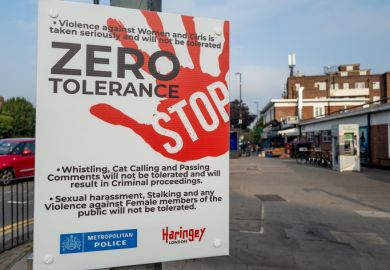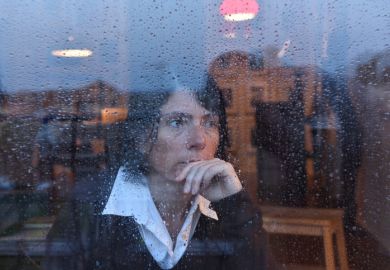Universities in the Global North have “a lot to learn” from the work being done in the Global South to tackle gender-based violence, a conference has heard.
Speaking at the British Council’s Going Global conference, Adrija Dey, lecturer in digital media at the University of Sussex, expressed concern that some people felt that high levels of sexual harassment and misconduct were “particularly a Global South problem”. She added that throughout her career she had come across people who said, “You’re so lucky that you live in London as it doesn’t happen here.”
However, Dr Dey, who is director of international knowledge exchange at The 1752 Group, which challenges sexual violence in higher education, said it was a global issue. “I’m by no means trying to romanticise it by saying that everything is great in those [Southern] contexts, but the Global North has a lot to learn from the work that has been done by activists, by survivors, by organisations and feminist collectives in the Global South,” she said.
Dr Dey highlighted the move by India’s University Grants Commission to ask universities to establish committees to develop guidelines for combating sexual violence. Good examples of this include a committee set up in one institution independently investigating harassment cases, supporting victims and connecting them to lawyers if they wanted to pursue their case through the criminal justice system.
Also speaking at the session, Helen Mott, a research consultant in gender equality and women’s rights, pointed to work done by Cairo University, which set up a unit to tackle violence against women. This offers training for first responders and in case management, policy and bystander intervention.
“There been some really good and creative initiatives and responses to this issue around the world,” she said.
She also highlighted a group of institutions in East Africa that have decided to “address issues of gender inequality holistically: from the content of teaching and learning materials, to the design of the learning spaces, gender equality and empowerment runs through every aspect of the programme”.
The problem, Dr Mott said, was that across the world there has often been “an unwillingness to confront” the high levels of violence against women in higher education. “People might be forgiven for thinking that there may be something about higher education institutions that would mitigate against it but, unfortunately, this is far from being the case,” she said.
In fact, there were a range of factors, such as the average age of people in higher education institutions and the presence of strong hierarchical relationships within those communities, that made universities places where it is “likely to proliferate, without strong measures to prevent it”.
Register to continue
Why register?
- Registration is free and only takes a moment
- Once registered, you can read 3 articles a month
- Sign up for our newsletter
Subscribe
Or subscribe for unlimited access to:
- Unlimited access to news, views, insights & reviews
- Digital editions
- Digital access to THE’s university and college rankings analysis
Already registered or a current subscriber?










